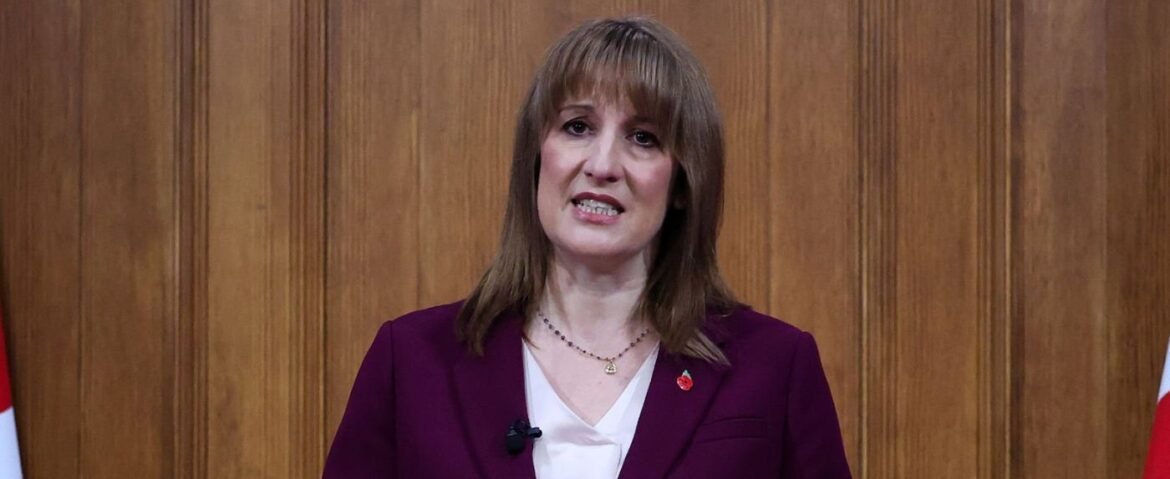Rachel Reeves is preparing to deliver a pivotal Budget in 2025, a moment that could shape the economic landscape and affect both businesses and households. After last year’s tax hikes, which included the £25bn National Insurance increase and a significant rise in the national minimum wage, firms remain cautious. Business leaders are watching closely, hoping for stability and clarity in fiscal measures.
The chancellor’s challenge is multi-faceted: balancing public spending, supporting workers, and encouraging economic growth, all while managing fragile business confidence. The UK economy faces weak productivity growth, inflationary pressures, and a public sector still adjusting to post-pandemic financial realities.
This article explores the expected measures, potential impacts, and the strategies the Labour leader on the economy may employ to navigate a complex fiscal landscape. It also examines the reactions of businesses, voters, and analysts, while considering lessons from previous budgets that illustrate the fine balance required to succeed.
Business Pressures and the Labour Chancellor’s Strategy
Strains on Firms After Previous Tax Hikes
Business leaders have faced a tumultuous year. Rising business rates, increased electricity bills, and inflation-busting wage growth have strained boardrooms. The chancellor must signal stability, avoiding blanket tax rises that could further undermine confidence.
Supporting Growth Through Targeted Measures
The government’s goal is to create a pro-growth environment without introducing “nasty surprises.” Measures such as reforming business rates, making discounts permanent for small firms, and targeting relief to key sectors like energy and high-potential industries are likely. These steps are expected to benefit sectors identified in the industrial strategy, from technology and manufacturing to energy and logistics.
Rachel Reeves to Announce Historic Spending Cuts Amid Economic Challenges
The Role of Monetary Policy
As the Bank of England considers lowering interest rates to encourage borrowing and spending, she must carefully navigate the interplay between monetary and fiscal policy. A balance between tax measures and incentives for growth will be essential to prevent a slowdown in economic activity.
Welfare Reforms Under the Chancellor
Changes to the Two-Child Benefit Cap
One of the most controversial aspects of the upcoming Budget is the approach to welfare. The Labour chancellor is expected to address the two-child benefit cap and introduce additional support measures for families. Critics argue these policies could reinforce the perception that Labour prioritizes welfare spending over hardworking citizens.
Perception of Tax Burdens on Workers
Polling indicates that many voters perceive Labour’s economic measures as disproportionately rewarding those who do not work while subtly increasing the tax burden on ordinary workers. Freeze in income tax thresholds, higher council taxes for large properties, and caps on pension contribution schemes are all likely tools to raise revenue.
Balancing Fairness and Fiscal Responsibility
The chancellor has emphasized fairness and the need to support the genuinely needy, suggesting that the Budget aims to target support where it is most needed while maintaining incentives for work. The challenge will be balancing fiscal responsibility with public perception, avoiding accusations that Labour is “rewarding laziness” while ensuring those in need are protected.
Taxes and Fiscal Strategy
The Fiscal Hole Challenge
The Treasury faces a “fiscal hole” caused by slower-than-expected economic growth and unimplemented welfare cuts. Productivity growth in the UK remains weaker than historical trends, reducing tax revenue. At the same time, promises to reduce welfare spending have not yet materialized, creating pressure to raise additional funds.
Tools for Managing Public Finances
The Labour leader on the economy is likely to rely on several tools to manage this challenge, including fiscal drag, long-term government spending adjustments, and targeted taxes on high-value properties, capital gains, and gambling. These measures aim to raise billions while avoiding politically sensitive increases to VAT or the basic income tax rate.
Lessons from Previous Chancellors
Historical budgets, particularly those by George Osborne between 2012 and 2020, illustrate that complex measures can backfire if poorly communicated. The chancellor must ensure the Budget is comprehensive yet clear, avoiding the pitfalls of complexity while addressing short-term fiscal needs and long-term economic stability.
A New Fiscal Era as Rachel Reeves’ Budget Signals Change
Consumer Confidence and Spending
Cutting the Cost of Living
A core goal of the upcoming Budget is to maintain consumer confidence. By cutting the cost of living and ensuring households retain disposable income, she hopes to stimulate spending and sustain economic growth. Measures may include freezing prescription charges, subsidizing rail fares, and supporting energy bill reductions for households and businesses alike.
Supporting Families Through Wage and Childcare Policies
Consumer confidence is vital for overall economic health. Increases to the national living wage and national minimum wage, combined with expanded free childcare and school meals programs, aim to support working families while encouraging employment. By investing in families, the Budget addresses both short-term economic pressures and long-term social equity.
Employment Law and Worker Protections
Protecting Workers While Managing Costs
Labour’s Employment Rights Bill remains a focal point in the eyes of business leaders. While designed to protect new employees from unfair dismissal and ensure immediate sick pay eligibility, concerns persist about increased bureaucracy and hiring costs. The Treasury has indicated that these reforms will be implemented in ways that benefit both employees and employers, avoiding a zero-sum scenario.
Impact on Pension Schemes
Salary sacrifice schemes for pensions may also be capped, affecting larger employers and workplace retirement contributions. This aligns with broader fiscal strategies aimed at ensuring fairness and sustainability without disproportionately affecting small and medium-sized businesses.
Public Perception and Political Risks
Maintaining Party Unity
Political strategy is critical. The chancellor has emphasized that the Budget is a cohesive package, not a “pick and mix” of policies. MPs have been reassured that while some measures may not please everyone, the overall framework is progressive and focused on long-term stability.
Voter Concerns and Reputation Management
Critics argue that prioritizing welfare spending while subtly increasing worker taxation risks casting the party as more aligned with benefits than with hardworking constituents. Polls reveal that many voters perceive Labour as creating a system that rewards laziness rather than effort, which could influence election outcomes if the narrative takes hold.
Communicating Fairness
The chancellor’s task is therefore twofold: implement effective fiscal policy while communicating clearly that the measures support fairness, economic stability, and long-term growth. The Budget’s success will be judged not only on numbers but also on perception—both among businesses and voters.
Lessons from Past Budgets
Complexity in Budget Planning
Historical context offers insight into potential pitfalls. Excessive complexity and numerous minor tax measures can lead to public confusion, backlash, and policy reversals. Last year’s Budget included nearly 94 measures, highlighting the difficulty of balancing ambition and clarity.
Avoiding Osborne-Like Pitfalls
Lessons from Osborne’s budgets illustrate that relying on too many small measures can lead to unexpected political and economic consequences. The Labour chancellor must ensure the Budget is comprehensive yet clear, avoiding the pitfalls of complexity while addressing both short-term fiscal needs and long-term economic stability.
The Path Forward for the Labour Chancellor
Supporting Business Confidence
The 2025 Budget is pivotal. Its success depends on striking a balance between fiscal responsibility, economic growth, and public perception. Supporting business confidence through predictable tax and rate policies is essential for encouraging investment and innovation.
Protecting Workers and Families
Protecting workers via fair wages, employment rights, and childcare support will reinforce Labour’s commitment to economic fairness. By combining social support with fiscal prudence, she aims to create a stable environment for households and businesses alike.
Managing Public Finances
Addressing the fiscal shortfall with careful, targeted measures rather than broad, politically risky taxes is central to avoiding public backlash while maintaining fiscal responsibility.
Building Confidence and Stability
By communicating clearly to the public and MPs that the Budget is fair, cohesive, and sustainable, the Labour chancellor seeks to reinforce Labour’s credibility as a party capable of managing the economy while supporting citizens across all sectors.
FAQs:
- What are the main priorities of Rachel Reeves’s 2025 Budget?
The Labour chancellor aims to support businesses, boost economic growth, protect workers, and reduce household costs through targeted measures and welfare support.
- How will Rachel Reeves address business concerns in the Budget?
She plans to reform business rates, offer sector-specific relief, and encourage investment in high-potential industries to maintain stability and growth.
- Will the Budget increase taxes for ordinary workers?
Some households may see higher contributions due to frozen income tax thresholds and capped pension schemes, balanced by cost-of-living support measures.
- What changes are expected in welfare policies under the Budget?
The two-child benefit cap may be adjusted, and some benefits could rise with inflation to support families while keeping fiscal sustainability.
- How will the Budget affect consumer confidence?
By reducing household costs, supporting wages, and ensuring employment protections, the Budget aims to boost spending power and economic activity.


